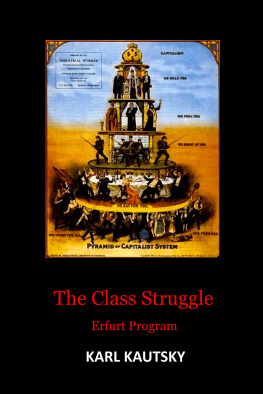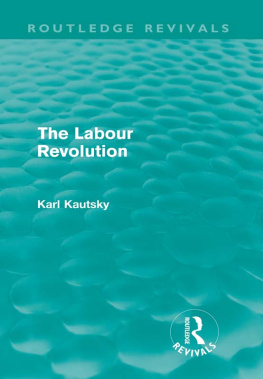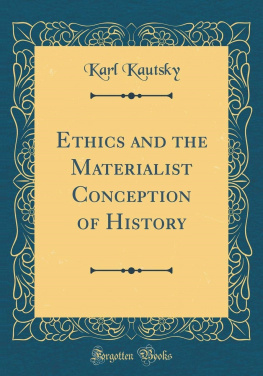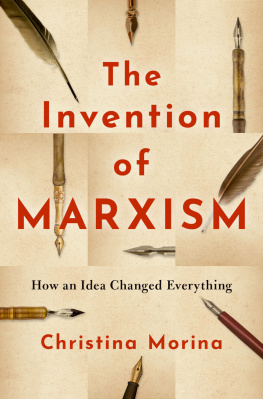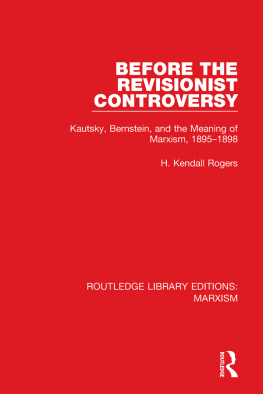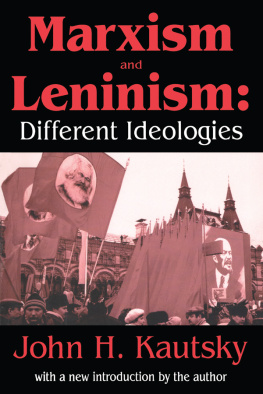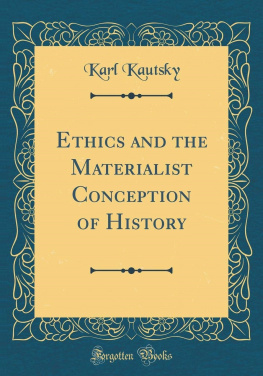I. THE PASSING OF SMALL PRODUCTION.
1. Small Production and Private Property.
The program adopted by the German Social Democracy at Erfurt in 1891 divides itself into two parts. In the first place it outlines the fundamental principles on which Socialism is based, and in the second it enumerates the demands which the Social Democracy makes of present day society. The first part tells what Socialists believe; the second how they propose to make their belief effective.
We shall concern ourselves only with the first these parts. This again separates itself into three divisions: (1) an analysis of present day society and its development; (2) the objects of the Social Democracy; (3) the means which are to lead to the realization of these objects.
The first section of the program reads as follows: Production on a small scale is based on the ownership of the means of production by the laborer. The economic development of bourgeois society leads necessarily to the overthrow of this form of production. It separates the worker from his tools and changes him into a propertyless proletarian. The means of production become more and more the monopoly of a comparatively small number of capitalists and landholders.
Along with this monopolizing of the means of production goes the crowding out and scattering of small production, the development of the tool into the machine, and a marvelous increase in the productivity of labor. But all the advantages of this transformation are monopolized by capitalists and landholders. For the proletariat and the disappearing middle class the small business men and farmers it means increasing uncertainty of subsistence; it means misery, oppression, servitude, degradation and exploitation.
Forever greater grows the number of proletarians, more gigantic the army of superfluous laborers, and sharper the opposition between exploiters and exploited. The class-struggle between the bourgeoisie and proletariat is the common mark of all industrial countries; it divides modern society into two opposing camps and the warfare between them constantly increases in bitterness.
The abyss between propertied and propertyless is further widened by industrial crises. These have their causes in the capitalist system and, as the system develops, naturally occur on an increasing scale. They make universal uncertainty the normal condition of society and so prove that our power of production has got beyond our control, that private ownership of the means of production has become irreconcilable with their effective use and complete development.
Many a man thinks he has given proof of wisdom when he says, There is nothing new under the sun. There is nothing more false. Modern science shows that nothing is stationary, that in society, just as in external nature, a continuous development is discoverable.
On the nature of this social development is based the theory of Socialism. No one can understand the one without study of the other.
We know that primitive man lived, like the animals, on whatever nature happened to offer. But in the course of time he began to devise tools. He became fisher, hunter, herdsman, finally farmer and craftsman. This development was constantly accelerated, until today we can see it going on before our eyes and mark its stages. And still there are those who solemnly proclaim that there is nothing new under the sun.
A peoples way of getting a living depends on its means of production on the nature of its tools and raw materials. But men have never carried on production separately; always, on the contrary, in larger or smaller societies. And the varying forms of these societies have depended on the manner of production. The development of society, therefore, corresponds to a development of the manner of production.
The forms of society and the relations of its members are intimately connected with the forms of property which it maintains. Hand in hand with the development of production goes a development of property. So long as labor was performed with comparatively simple tools which each laborer could possess, it went without saying that he owned the product of his toil. But as the means of production have changed, this notion of property right has passed away.
We shall examine the course of development which has brought this about.
2. Commodities and Capital.
The beginnings of capitalist society are to be found in agriculture and handicraft.
Originally the agricultural family satisfied all of its own needs. It produced all the food, clothing and tools for its own members and built its own house. It produced as much as it needed and no more. With the advance in the methods of farming, however, it came about that more was produced than enough to satisfy the immediate needs of the family. This placed the family in a position to purchase weapons, tools or articles of luxury, which it could not produce itself. Through this exchange products became commodities.
A commodity is a product designed for exchange. The wheat the farmer produces for his own consumption is not a commodity; the wheat he produces to sell is a commodity. Selling is nothing more nor less than trading a commodity for another which is acceptable to all, gold, for example.
Now the craftsman working independently is a producer of commodities from the beginning. He does not sell merely his surplus products; production for sale is his main purpose.
Exchange of commodities implies two conditions: first, a division of social labor; second, private ownership of the things exchanged. The more this division develops and the more private property increases in extent and importance, the more general becomes production for exchange.
This leads naturally to the appearance of a new trade; buying and selling becomes a business. Those engaged in it make their living by selling dearer than they buy. This does not mean that they control prices absolutely. The price of a commodity depends finally on its exchange value. The value of a commodity, however, is determined by the amount of labor generally required to produce it. The price of a commodity, nevertheless, seldom coincides exactly with its value; it is determined by the conditions of the market more than by the conditions of production primarily by the relation of supply and demand.

